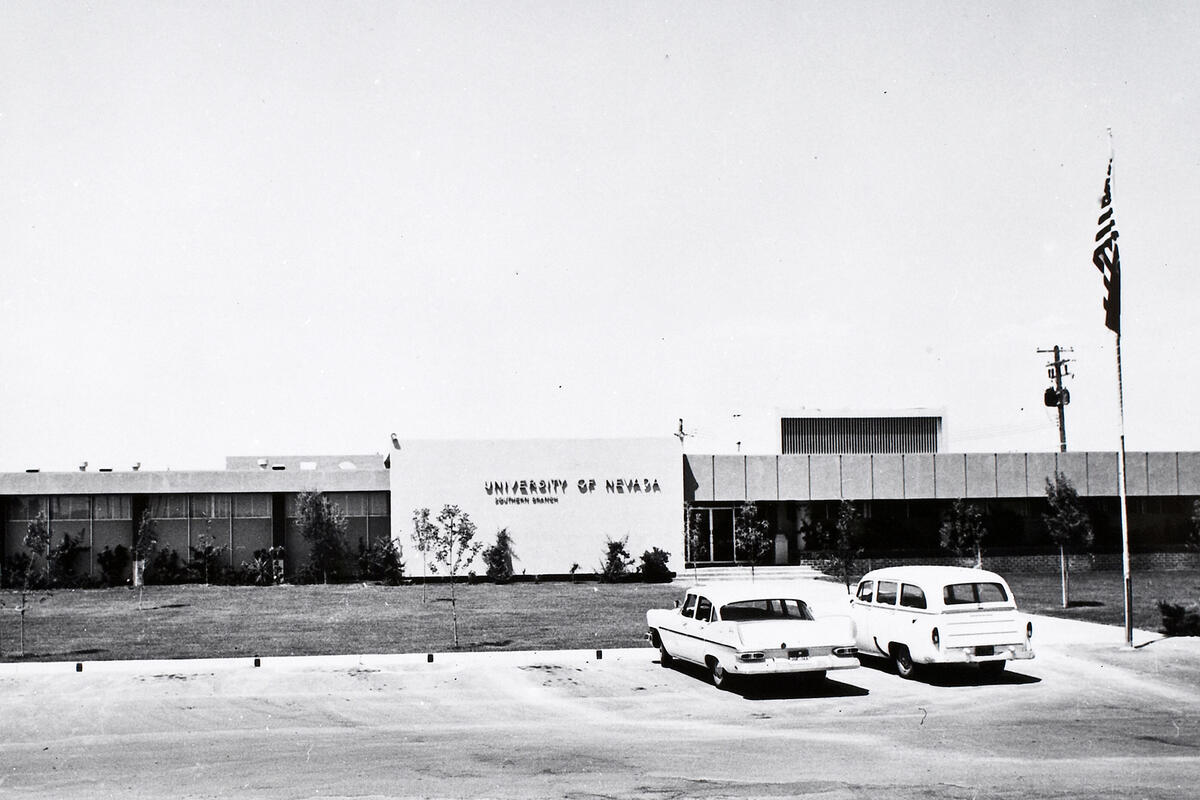
Our History
Thanks to its innovative frontier spirit, UNLV has kept pace with one of the country's fastest-growing and most enterprising cities.
From Pioneer Outpost to Academic Powerhouse
Since its first classes were held in 1957, the University of Nevada, Las Vegas (UNLV), has undergone an amazing transformation — from a dusty outpost on the south edge of town to a thriving urban research institution. Along the way, thanks to its innovative frontier spirit, UNLV has kept pace with one of the country's fastest-growing and most enterprising cities.
The Early Years
The university's origins were humble indeed. In 1951, when the post-war boom had swollen Las Vegas' metropolitan population to more than 50,000, the University of Nevada, Reno (UNR), established an extension program. Twenty-eight students began meeting for classes in the dressing rooms of Las Vegas High School's auditorium. In 1954, the Nevada Board of Regents founded the Southern Regional Division of the University of Nevada, popularly known as Nevada Southern. Students adopted the Rebel name and mascot to reflect their desire to break free from UNR. After Las Vegas residents exerted pressure, the regents decided to acquire land for a campus, finally selecting an 80-acre parcel along the two-lane dirt road known as Maryland Parkway.
On September 10, 1957, the first classes were held on campus in a new 13,000-square-foot building, later named for Maude Frazier, a state assemblywoman and founding force behind Nevada Southern. A year later, the school received accreditation from the Northwest Association of Secondary and Higher Schools. To serve the growing enrollment, buildings went up in a flurry of construction, including a physical education and health center, a science and technology building, a classroom building named for regent Archie C. Grant, and the James R. Dickinson Library, named for the first director of the extension program.
Winning Independence
Despite its expansion, Nevada Southern remained under UNR's control. In fact, university officials required students to spend a semester in Reno before graduating. After fighting to become a degree-granting institution, Nevada Southern held its first commencement in 1964, graduating 29 students as the "Centennial Class" in honor of Nevada's 100th anniversary as a state. The next year, the school became Nevada Southern University, with its own curriculum. Donald Moyer served as its first chancellor and then became its first president in 1968, when the university finally won its autonomy under the state's higher-education system, giving it equal status to UNR.
In 1969, with the board of regents' approval, the university adopted its current name. By the following year, as Las Vegas' metropolitan population reached 275,000, UNLV enrolled more than 5,500 students. During the 1977-78 academic year, UNLV surpassed UNR in total enrollment.

Photo courtesy of UNLV Special Collections
Gathering Momentum
Over the next three decades, UNLV continued this heady rate of development—erecting more than 100 buildings, developing dozens of graduate programs, creating partnerships with the community, fielding nationally ranked sports teams, founding an alumni association, promoting scholarship, establishing a fundraising foundation, and recruiting diverse and talented students from across the country.
Source: UNLV — The University of Nevada, Las Vegas: A History (2007) by professor Eugene P. Moehring.